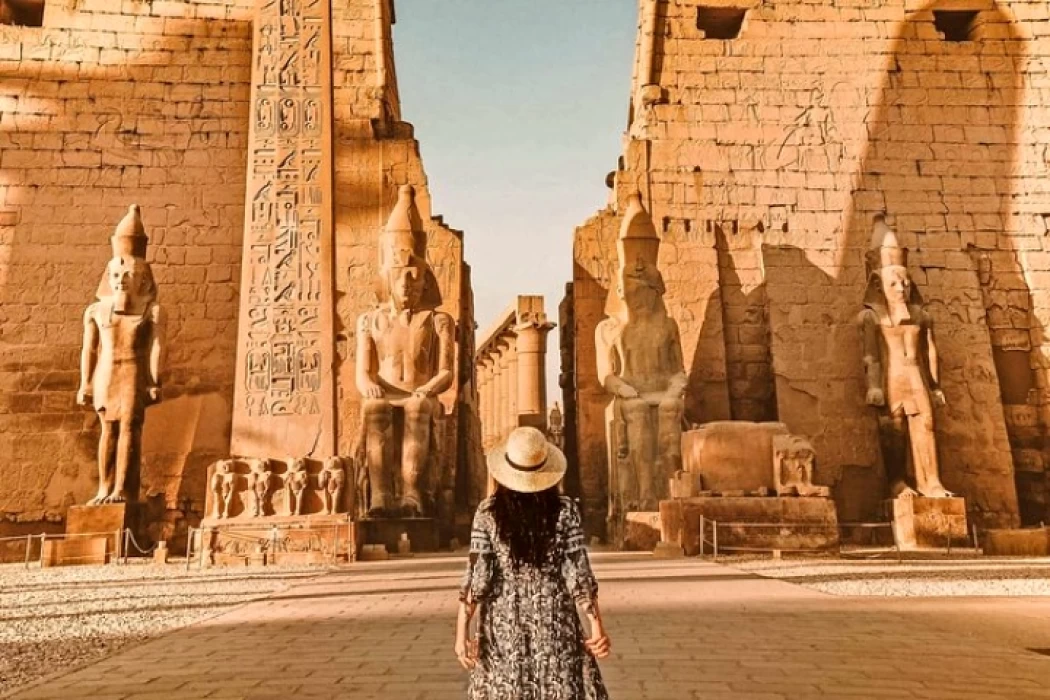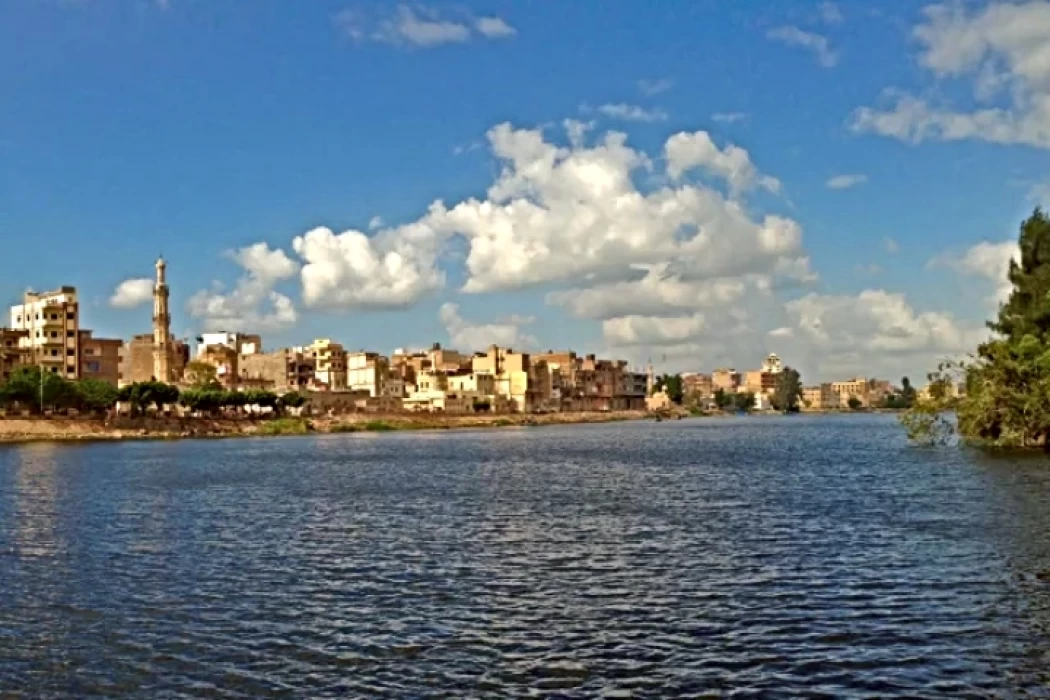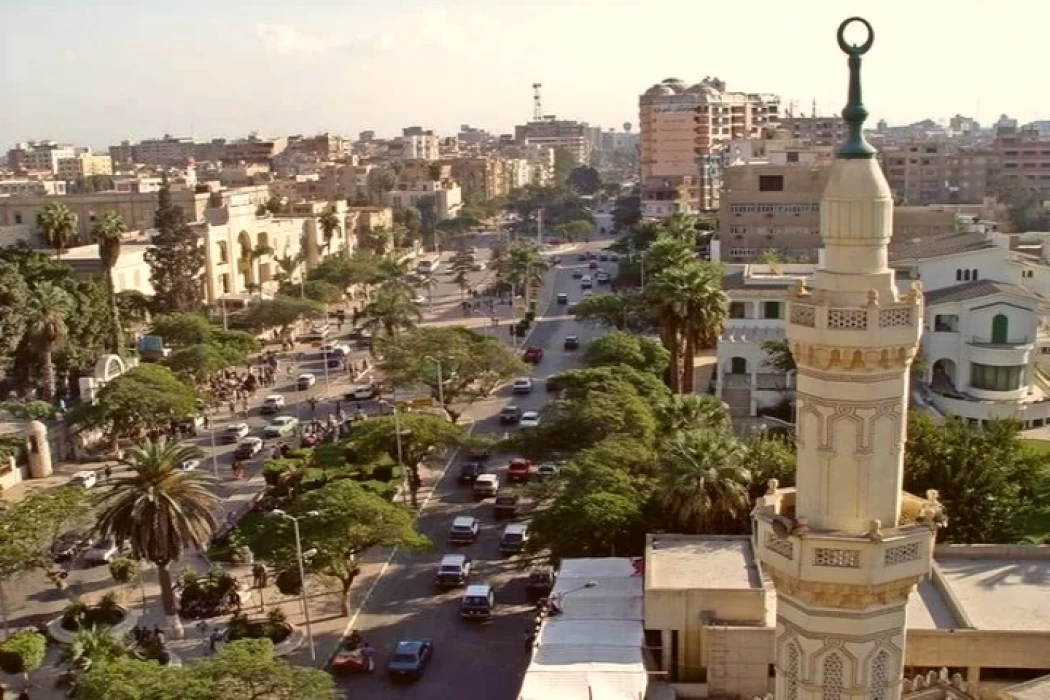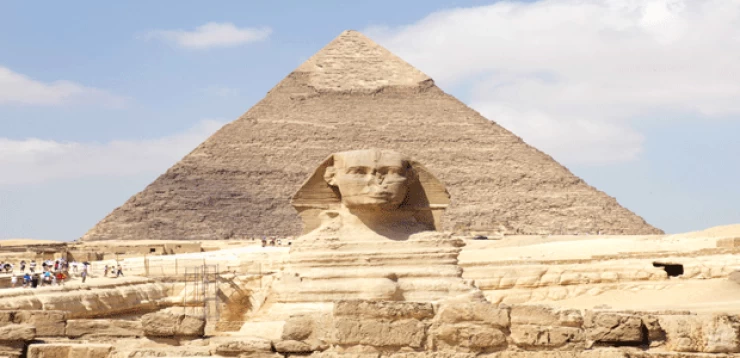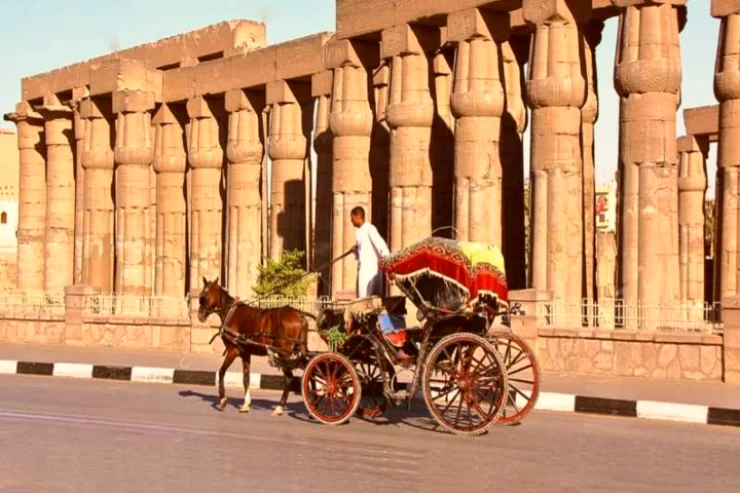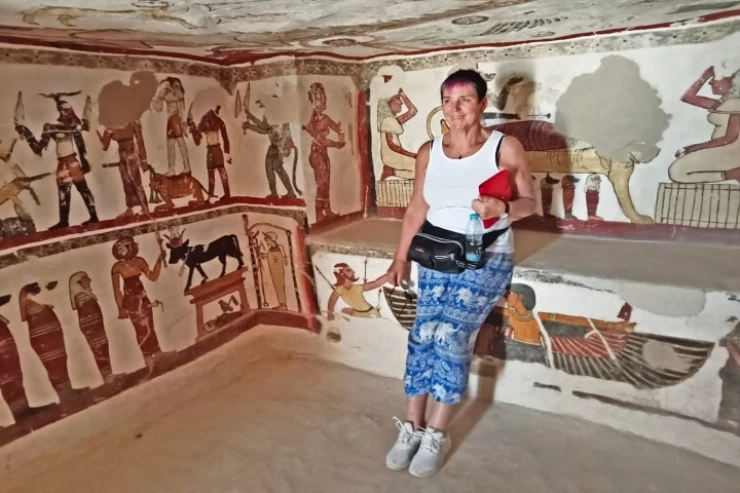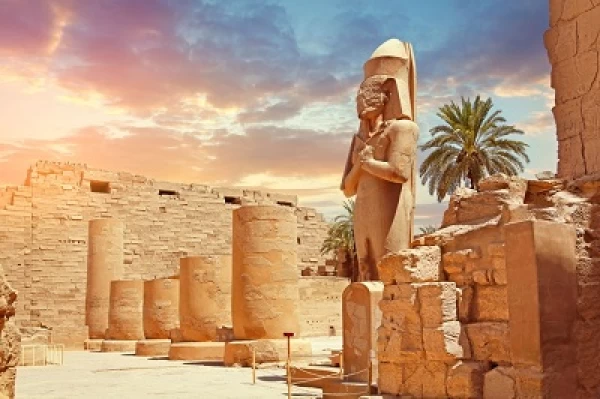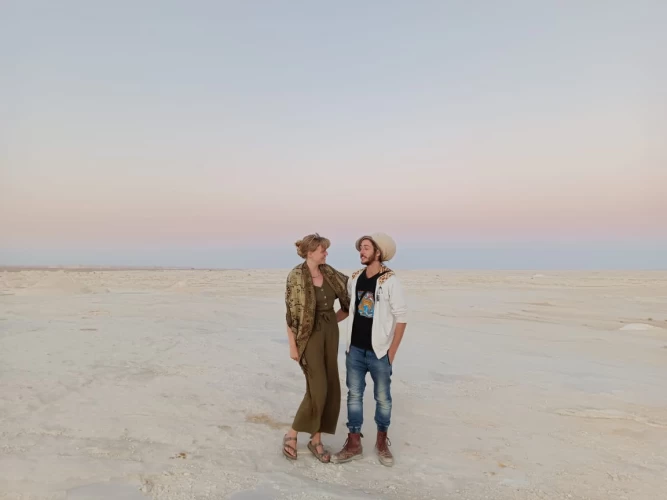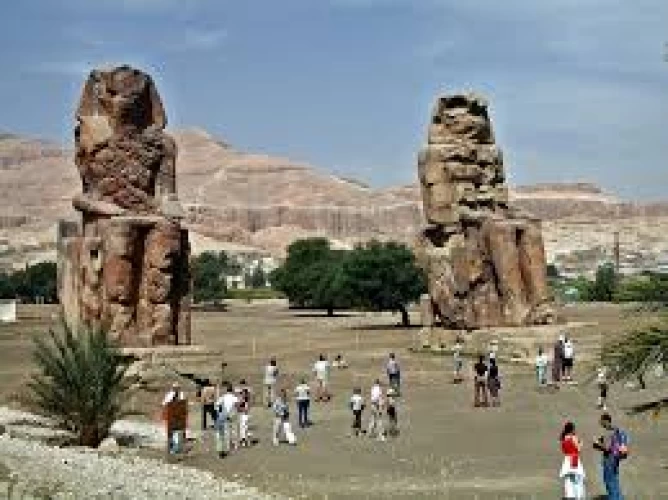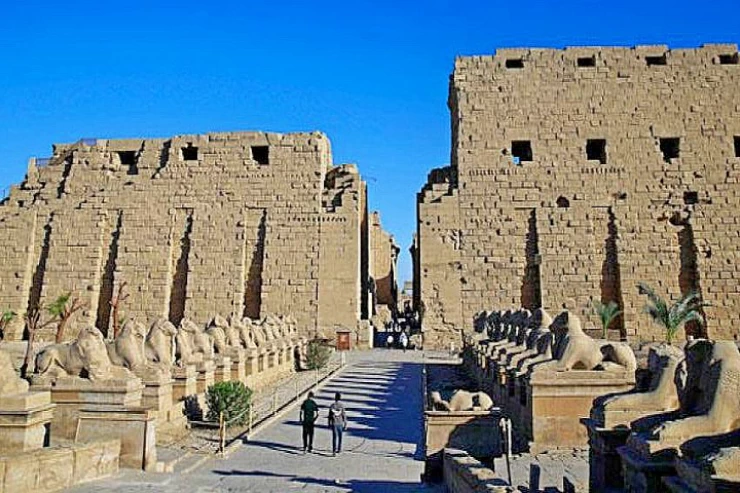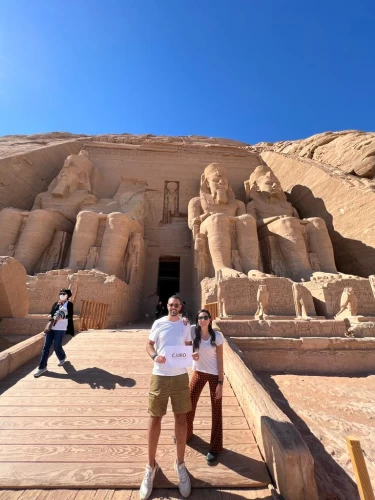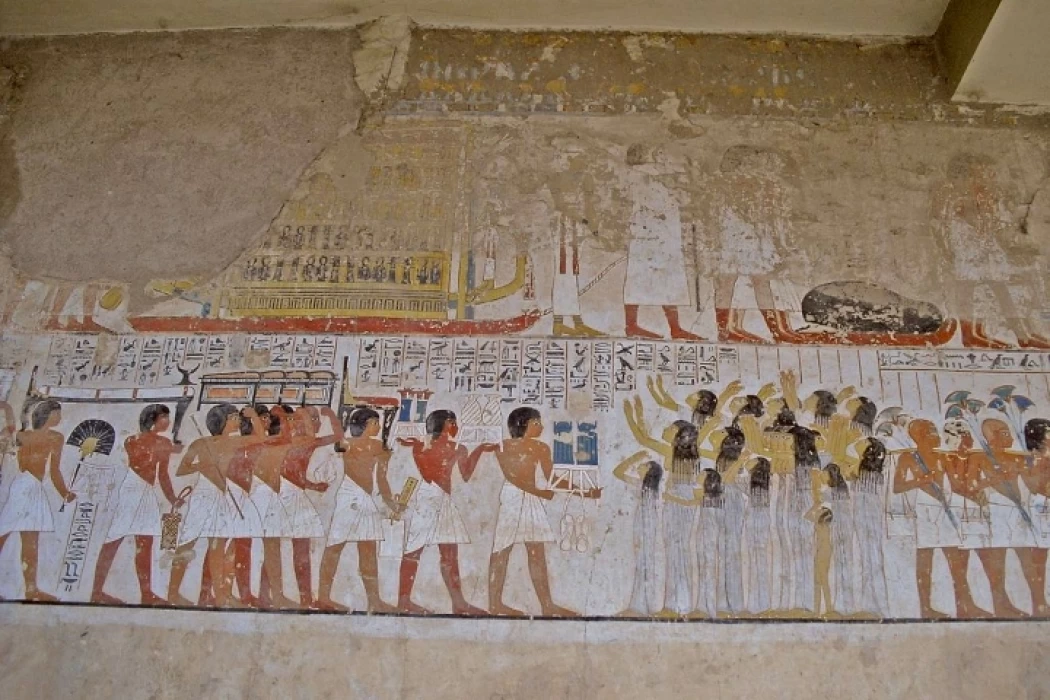
Tomb of Ramosa in Luxor | Tombs of The Nobles Luxor
Tombs of The Nobles Luxor history
The pharaonic royalty is the exclusive focus of nearly all we see of ancient Egypt today. Because of their enormous scale and the fact that they are actually cut out of stone, the gigantic architectural projects that the Egyptian pharaoh commissioned throughout the civilization's history have fared far better over time than other ancient relics.
However, out of the rest of the sites in the West Bank, the Tombs of the Nobles are of special interest as they are quite the opposite. These groups of tombs that are cut into the rocky slope between the Ramesseum and the Temple of Hatshepsut all belong to the same class of officials, namely, faithful functionaries, governors and other inferior noblemen.
In the temples and royal mortuaries found around Luxor, one may find the dominant themes of conquering kings and the images of everlasting life inscribed in stone, somewhat overbearing. In case of temple fatigue setting in, it would be wise to consider a visit to the Tombs of the Nobles (commonly referred to as the Worker's Village).
More modest portrayals of daily life and the tasks these bureaucrats performed may be found in these graves. The realistic portrayals of nature and commonplace issues are energizing and offer some further understanding of what ancient Egypt may have truly seemed like.
Because they attract relatively few visitors, the Tombs of the Nobles are not as clearly identified as the bigger monuments and royal tombs on the West Bank. This can make it a little more challenging to see them without a guide, but it's still a pleasant diversion from the busier locations in the Valley of the Kings and larger temple complexes.
With its magnificent wall murals that provide insight into ancient Egyptian beliefs and rituals, the Tomb of Ra Moza is a work of art. In addition to learning about the significance and meaning of these ancient paintings, visitors may be in awe of their beauty and artistry.
In the year nineteen forty-one, an archeologist from France by the name of Bernard Bruyère uncovered the tomb of Ra Moza, which is located near Luxor, west of the Nile River. The tomb, among other things, contains beautiful wall paintings and intricate designs within the pieces of jewelry and vases.
Latest Articles
Admin
Aswan Governerate in Egypt
Aswan was known as ‘Sonu’ in ancient Egyptian times, meaning market, as it was a trading centre for caravans coming to and from Nubia. In the Ptolemaic era, it was called ‘Sin’ and the Nubians called it ‘Yaba Swan’. It was also known as the Land of Gold because it served as a great treasure or tomb for the kings of Nubia who lived there for thousands of years. Before the migration, Aswan's borders extended from Asna in the east to the border of Sudan in the south, and its inhabitants were Nubians, but after the Islamic conquest of Nubia, some Arab tribes settled there.
Admin
About Luxor Governorate in Egypt
The South Upper Egyptian area is home to the Egyptian governorate of Luxor. Its capital is Luxor, which was formerly Thebes, the capital of Egypt throughout multiple pharaonic eras. Its centers and cities are spread over both sides of the Nile River. The said governorate was established by Presidential Decree No. 378 of 2009, which was promulgated on the 9th of December of that year.
Admin
History of kafr El Sheikh Governorate
Kafr El Sheikh Governorate, located in the far north of Egypt in the Nile Delta, overlooking the Mediterranean Sea, is characterised by the diversity of natural life and environments, and is one of the Egyptian cities that can be visited after the end of the first semester exams at universities and schools, as it features many diverse tourist and recreational places at symbolic prices within everyone's reach.
Admin
Egypt's New Administrative Capital
The New Administrative Capital is considered the project of the era because it reflects a perfect image of the future and progress on the economic, cultural, social and civilisational level, as the capital is considered the new capital of Egypt at the present time. The importance of the New Capital is that it is a comprehensive transformation of the future of buildings, services and national and mega projects in Egypt.
Admin
Al Gharbia Governorate
The Governorate of Gharbia is inclusive in the geographical area of The Arab Republic of Egypt which is in the African continent, more specifically in the region surrounding the Nile delta, between Damietta and Rashid governance. To the control of the region from the north is Kafr El-Sheikh Governorate, from the south Menoufia Governorate, from the east – Dakahlia, Qalyubia Governorates, and to the west is the Beheira Governorate.
Admin
Hamata Islands (Qulaan Archipelago) in Marsa Alam
Each reserve has several sectors. In Wadi El Gemal Reserve, there is one of the natural areas called the Hamata area or Hamata sector in Wadi El Gemal Reserve. Its sectors are the perfect and most ecological, land and water, and host countless animals and plants found in the oceans and on the land.

